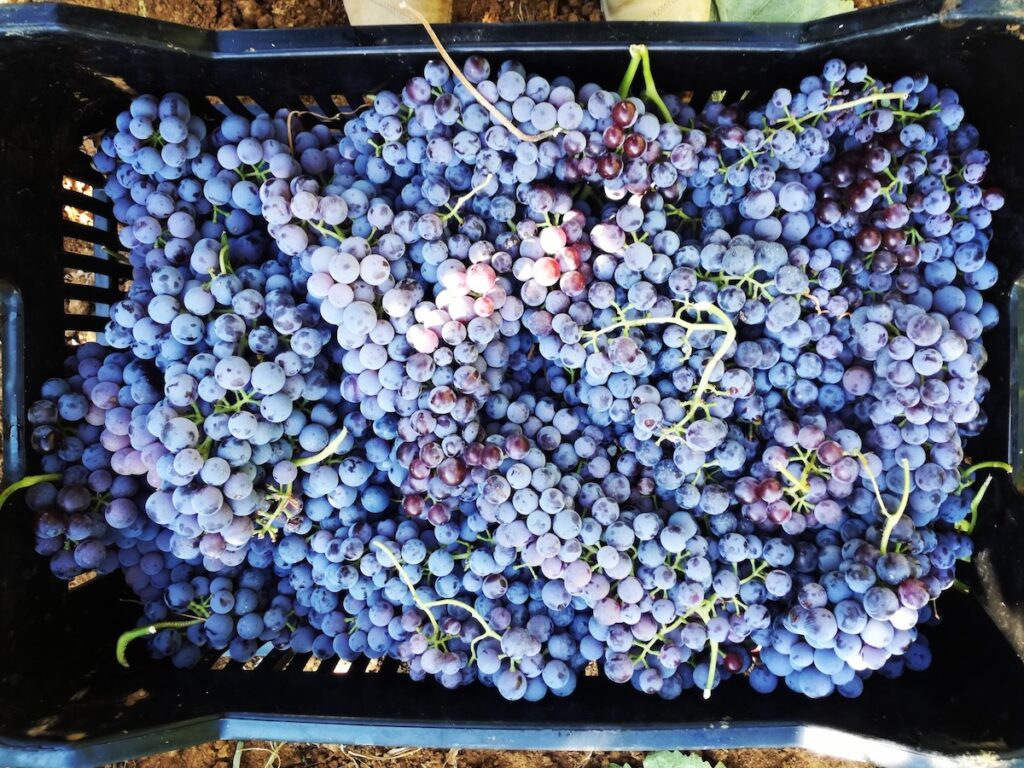A few cultures love wine enough to dedicate a god to it. The Greeks are among them. Dionysus, with a crown of grape vines in his hair, was the deity of winemaking, fertility, and festivity. His full name is Dionysus Eleutherius—“The Liberator,” serving as a reminder that wine is not just what you swirl in your glass at a bar or what you see at the liquor store, but an ancient tradition to free you of your inhibitions. The cult of Dionysus also played a part in the development of modern theatre, as his worshipers played out dramas and ecstatic dance performances.
But enough about myths. American understanding of Greece often limits itself to mythology at the expense of modern Greek culture. In the 21st century, Greek wine is alive and well, blending the country’s ancient history of winemaking with contemporary methods and flavors.
The Enchanting World of Greek Wine
Katerina Bosinakis of Bosinakis Winery pointed out that the very first sommeliers, known as Oenochoi, were Greeks. “The first wine writers? Also Greek!” she said. “For many, their only exposure to Greek wine happens during their vacations in Greece. Unfortunately, in the past, many tourist-filled tavernas didn’t prioritize quality Greek bottled wine, instead serving low-grade bulk wine. This gave visitors a misleading impression of Greek wine. But thankfully, this is changing.” Many aren’t even aware that Greece produces wine at all, despite its proximity to major wine-making regions like Italy, France, and Georgia.
Greece is a relatively small country. Lisa Stavropoulos, founder of The Greek Grape, has traversed nearly all of it and leads educational wine tours throughout the country. “The amount of diversity in a small country is amazing. If you just go to Athens or Santorini, you don’t really understand it,” Stavropoulos said. 90% of varietals grown in Greece are indigenous grapes. However, in the ’80s and ‘90s, if you knew one Greek wine, though, you knew retsina, a white wine aged in pine barrels. Though an ice-cold glass of retsina on a hot and humid day is glorious, the resinous, pine-y taste was off-putting for some and turned potential consumers off Greek wine. However, Greece has more than 300 grape varieties, so retsina is only the tip of the iceberg.
Greek Varietals Beyond Retsina
Greek winemakers see part of their mission now as going beyond retsina. In the mid-2000s, when Greece’s economy was sputtering, the country focused on exporting more goods and settled on four varietals to share with the rest of the world: Assyrtiko and Moschofilero for white and Agiorgitiko and Xinomavro for red. “Four difficult to pronounce varietals are better than forty,” Stavropoulos said.
Assyrtiko is particularly special because in Santorini, where the vines grow in the sand, winemakers weave the vine into a basket shape for it to grow correctly. The island sand protects it from phylloxera, and mist and morning dew irrigate it through the air. Assyrtiko took off from the novelty of its growth techniques and its association with the massively popular tourist destination of Santorini. Santorini Assyrtiko is now a top-quality bottle you can find on wine lists all over the world, though you can grow it in regions other than Santorini without a dip in quality. Wineries observed the success of Assyrtiko in foreign markets and followed suit by seeking out new customers.
“Drinking Greek wine makes you feel like you are in Greece. Who doesn’t want to be in Greece?”
Stamatis Mylonas’s family has been making wine in the Attica region since 1917. They’ve seen the perception of Greek wine change over the years. “We have to fight with a bad reputation because most of the retsina was produced in our region,” he said. Mylonas produces Savatiano, the white wine you typically use for retsina. But on its own, Savatiano is an aromatic white with stone fruit notes, and it ages well. Mylonas produces around 200,000 bottles a year and exports it to over 200 countries.

Unlike in the States, where we bemoan that wine sales are down and young people aren’t interested in drinking, Mylonas sees young people in Greece becoming more interested in wine. “Greeks in the ‘90s and 2000s didn’t drink bottles of wine,” he said. “People would get a glass or a carafe. But now, young people drink mostly high-quality wine and there are a lot of wine lovers. There are a lot of great wine bars in Athens.” He still makes retsina, but he uses far less pine resin than his father did.
Why drink Greek wine? Mylonas’s answer was simple. “Drinking Greek wine makes you feel like you are in Greece. Who doesn’t want to be in Greece? The sun, the sea, the Greek history…that is Greek wine.”
Get to Know Moschofilero
Katerina Bosinakis agrees that part of what makes Greek wine special is its sense of place. She primarily grows Moschofilero, which she calls “a quintessentially Greek wine.” The grape produces wines with crisp acidity, floral aromatics, and flavors of white-flesh fruit. “It’s refreshing and vibrant, perfect after a swim in the sea when paired with the right dishes,” she said. Despite it being a delicate grape, it thrives in the Arcadia region. “But what makes it truly special? Its color! It’s neither a white nor a red grape—it’s a striking grayish-purple,” Bosinakis described.

Bosinakis suggests that Moschofilero isn’t just a wine to enjoy in its youth, though. It has a far-reaching potential for aging. “A well-made Moschofilero doesn’t just survive the years. It thrives. We’ve found that its sweet spot is between two and three years, with exceptional vintages aging beautifully for up to five years.” To her, Arcadia isn’t just a place, it’s a feeling, and a well-aged Moschofilero can transport you there.
The land has a simplicity and an idyllic connection to nature. “Drinking Moschofilero young means missing out on its full potential. We see it as a bud that slowly blossoms. Each passing year adds a new layer to its personality. One of its greatest strengths is its naturally high acidity—an essential trait for wines meant to age,” she said.

Agiorgitko to the World
Dimitris Skouras’ family winery in the Nemea region started in 1986 and was pivotal in bringing Greek wine to the world through Megas Oenos, his blend of Agiorgitko and Cabernet Sauvignon. Agiorgitiko, meaning “St. George” is a powerful, tannic red that can also be velvety and gentle, with a nice acidity to balance it out. “It’s between Merlot and Pinot Noir. It’s not as dense as the Merlot but not as fine as the Pinot Noir,” Skouras described. The Megas Oenos blend helped consumers get over seeing the name of a varietal they didn’t recognize. “People saw Cabernet and thought ‘I like Cab, I’ll try this.” Mega Oenas is 80% Agiorgitiko and 20% Cabernet, with some of the best qualities of both.

Skouras’s father started making wine in his grandfather’s garage, but from there, the Skouras name has gone global. “A huge, huge role has been played by Santorini. People go there and fall in love with the islands. Then, they are more open to trying wine. You used to be able to find Greek wines only at Greek places, but now sommeliers include it if they want to have a global list,” he said. Though Skouras specializes in Agiorgitiko, he also grows Moschofilero and sees a growing interest overall in Greek wine. “The sense of place, the climate, and the varietals—no other combination of those three things exists as it does in Greece.”
Something New in Your Wine Glass
“Young people are looking for a challenge for the next new varietal. People learned to say Grüner Veltliner, didn’t they? Much of the success of Greek wines has been in the east coast which doesn’t have its own wine region,” Stavropoulos said. “It’s become especially popular with the younger set who are trying to impress. People are kind of over the Napa Cabernet. They want to find the next new thing.” There’s an interest in lesser-known regions like Greece, Croatia, or Bosnia for wine lists. Where consumers used to be afraid of what they didn’t know, now they see it as an opportunity to learn more. Greek wine is a perfect place to start.
Story by Emma Riva
Cover photo courtesy of Skouras Winery
Subscribe to TABLE Magazine’s print edition.
